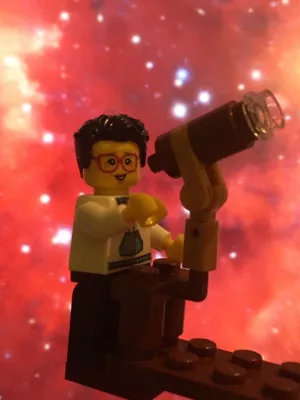
Jens Hoeijmakers
ASSOCIATE SENIOR LECTURER

The Mantis network : A standard grid of templates and masks for cross-correlation analyses of ultra-hot Jupiter transmission spectra
Author
Summary, in English
The atmospheres of ultra-hot Jupiters are highly interesting and unique chemical laboratories. Due to the very high atmospheric temperatures, their chemical composition is dominated by atoms and ions instead of molecules, and the formation of aerosols on their day-sides is unlikely. Thus, for these planets detailed chemical characterisations via the direct detection of elements through high-resolution day-side and transit spectroscopy are possible. This in principle allows the element abundances of these objects to be directly inferred, which may provide crucial constraints on their formation process and evolution history. In the recent past, several chemical species, mostly in the form of atoms and ions, have already been detected using high-resolution spectroscopy in combination with the cross-correlation technique. As part of the Mantis network, we provide a grid of standard templates in this study, designed to be used together with the cross-correlation method. This allows for the straightforward detection of chemical species in the atmospheres of hot extrasolar planets. In total, we calculate high-resolution templates for more than 140 different species across several atmospheric temperatures. In addition to the high-resolution templates, we also provide line masks that just include the position of line peaks and their absorption depths relative to the spectral continuum. A separate version of these line masks also takes potential blending effects with lines of other species into account.
Department/s
- eSSENCE: The e-Science Collaboration
- Lund Observatory - Undergoing reorganization
- Astrophysics
Publishing year
2023-01
Language
English
Publication/Series
Astronomy and Astrophysics
Volume
669
Document type
Journal article
Publisher
EDP Sciences
Topic
- Astronomy, Astrophysics and Cosmology
Keywords
- Planets and satellites: atmospheres
- Planets and satellites: composition
- Techniques: spectroscopic
Status
Published
ISBN/ISSN/Other
- ISSN: 0004-6361

